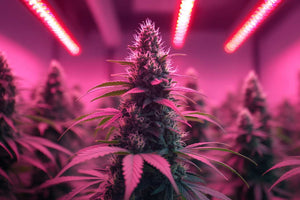In today's context of rapid urbanization, traditional farmland is no longer sufficient to cope with the food demand brought about by population growth. Have you ever thought that more than 55% of the world's population currently lives in cities, and this number is expected to reach 68% in 2050?
Faced with this situation, do we have a more efficient agricultural solution that can not only save precious land resources but also significantly increase food production? “Vertical farming” is one such innovative approach.
Vertical farming, this futuristic agricultural model, has actually gradually unfolded its revolutionary curtain before our eyes. This model allows crops to be cultivated on multiple levels of a single building, and its land utilization rate is more than 70 times that of traditional agriculture! More importantly, vertical farming also helps save water, reduce the use of chemical fertilizers and pesticides, and achieve multiple benefits.
Definition and Development of Vertical Farming

Vertical farming, also known as three-dimensional farming, is an innovative agricultural practice that is unique in that it uses vertical or sloped structures to grow crops. By cultivating plants in a multi-layered structure, this method significantly reduces land occupation and is particularly suitable for urban environments with limited land resources. Farms are no longer limited to traditional vast fields, but have transformed into towering urban "agricultural buildings" that accumulate layer by layer, reaching up to the clouds.
Although the concept of vertical farming first appeared in the early 20th century, it was only in recent decades, with the rapid advancement of science and technology and the deepening of global urbanization, that this agricultural model began to receive widespread attention and was gradually implemented.
Technology and Innovation

The success of vertical farming relies on its excellent space efficiency and extensive application of advanced technologies. The main technologies used in this agricultural model include hydroponics and aeroponics, as well as the use of LED growth lights to simulate natural light sources. These innovations allow plants to grow without soil, allowing for a year-round continuous production cycle.
Hydroponics and Aeroponics
Hydroponics and aeroponics are two crucial planting methods in vertical farming, both independent of traditional soil cultivation. Instead, they use alternative mediums to support plant growth and provide essential water and nutrients.
Hydroponics: Hydroponics is a method where a nutrient solution replaces soil to nourish plants. In this system, plant roots are submerged in water rich in dissolved nutrients. This method allows for more direct and efficient nutrient absorption and also reduces water usage since the water in the system can be recycled. Hydroponic systems simplify plant management, reduce the risk of pests and diseases, and allow for high-density cropping in limited spaces.
Aeroponics: Compared to hydroponics, aeroponics exposes plant roots to air containing a nutrient-rich mist, eliminating the need for water as a continuous medium for roots. This method enhances oxygen supply to the roots, promoting root health and thereby accelerating plant growth. Aeroponic systems are particularly suitable for plants that require a lot of oxygen to grow healthily.
LED Grow Lights
LED grow lights are an innovative lighting technology in vertical farming that simulate natural light to support plant growth without natural sunlight. These lights are designed to precisely control the wavelengths of light emitted, ensuring plants receive the optimal light for photosynthesis and growth.
Operation of Vertical Farms

Vertical farms use vertical space for crop cultivation, expanding planting areas upwards rather than outwards, significantly saving land use. These farms are typically located in urban buildings, using stacked architectures for plant cultivation. Here are some key steps in the operation of vertical farms:
Structural Design and Space Planning: Vertical farms typically use multi-level structures, each capable of independent cultivation. This design allows more plants to be grown in limited ground space and facilitates the installation of irrigation and lighting systems.
Irrigation and Nutrient Supply Systems: Vertical farms often use hydroponics or aeroponics, requiring efficient irrigation systems to ensure even water and nutrient distribution to each level. These systems are usually automated, adjusting water and nutrient supply based on plant growth needs and environmental conditions.
Light Management: Since vertical farms may not receive sufficient natural light, artificial light sources such as LED grow lights are necessary to provide the required illumination. These lights can deliver specific spectra suitable for plant growth and can be adjusted to mimic natural light's diurnal changes.
Climate Control Systems: Maintaining a stable environment is crucial in vertical farms. Climate control systems can regulate temperature, humidity, CO2 levels, etc., ensuring plants grow under optimal conditions. This control is typically managed by computer systems, which monitor environmental data and automatically adjust settings.
Harvesting and Post-Processing: Harvesting in vertical farms can be partially or fully automated. Mature crops are collected by robots or manually, then washed, graded, and packaged, ready for sale or direct supply to consumers.
With these efficient operational processes, vertical farms can achieve a continuous production cycle throughout the year, significantly increasing crop yield and quality while reducing resource consumption and environmental impact.
Note: The above content is reproduced from VANQ

